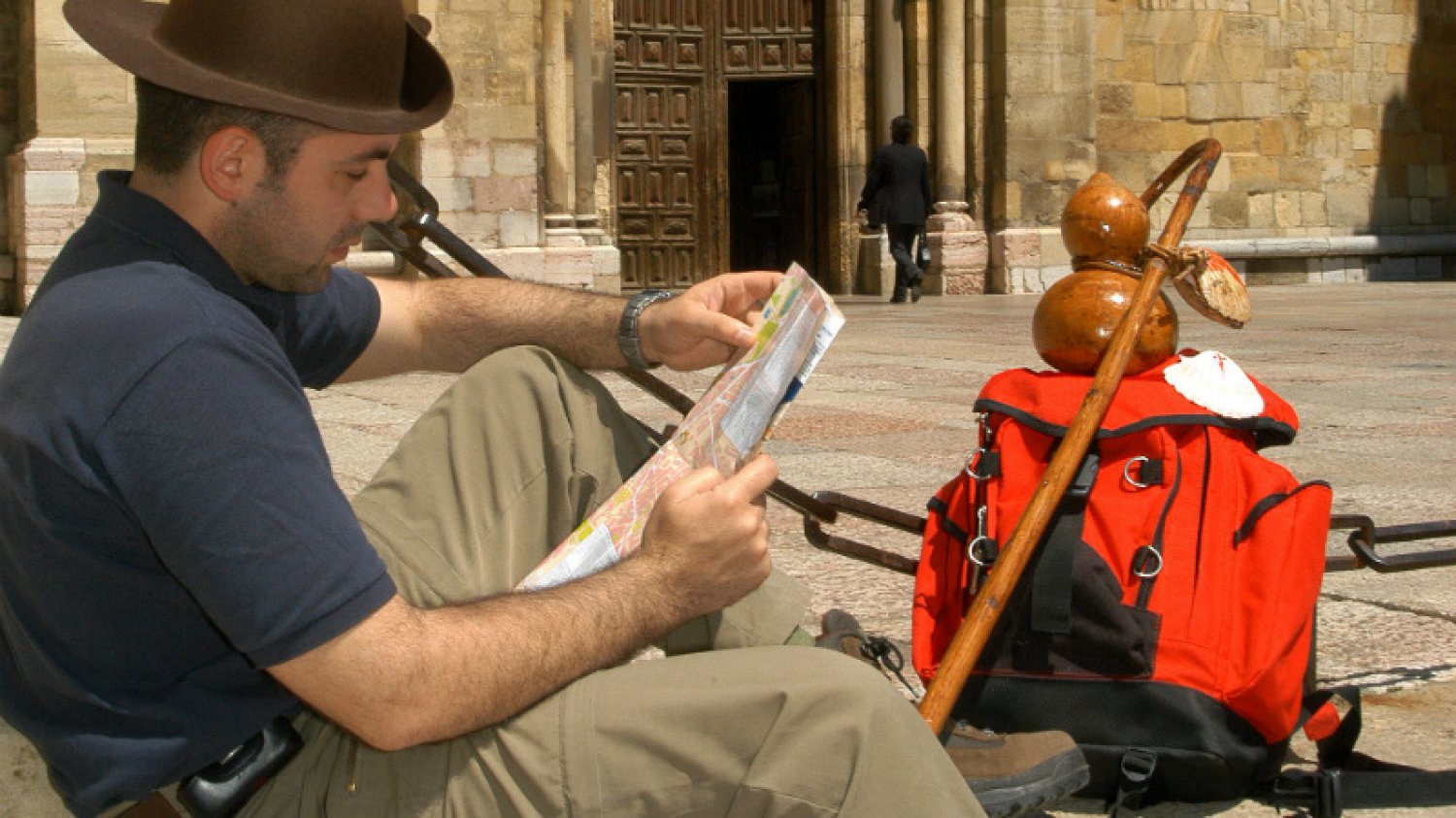
Create your own journey; Experience the best of Northern Spain at your own pace
This website uses its own and third-party cookies, for the proper functioning of the site and to generate usage statistics.
By continuing to browse we understand that you consent to our �ookie policy

At Spain Is More we help many pilgrims on their way with their camino. And we get various questions about whether or not to use sticks. We list the advantages and disadvantages for you.
The pilgrim's gear of the past
But first back to the past. We recognize Jacobus on the walking stick in his hand. For many walkers a reason to assume that a pilgrim to Santiago de Compostela always carries a stick. However, a stick does not make a walker a pilgrim and you do not have to be a pilgrim to walk with a stick. It has a practical background, just like in the past:
The pilgrim staff (latin: 'bascules') was a wooden stick, until the 14th century shorter than the height of the pilgrim, usually at the top of an apple-shaped round bud and at the bottom a wrought iron point. From the 15th century, the staff became increasingly longer and protruded above the pilgrim's head. In the middle there was a sturdy button with a handle underneath. At the top there were usually two round buttons, one at the top and a bit lower. From the 16th century, a fetch was often made between the two bulbs, in order to hang the drinking bottle, calabash, whip or scallop.
Sticks now
You can now almost not go on the Camino without stumbling over pilgrims with sticks. The pilgrim's staff new style, where the practical reasons of 'then' have been slightly modernized. The roads are now better than in the Middle Ages and walking with two sticks is better for your body.
In addition, it is not really necessary to protect you from highway men, wild dogs and wolves while on the Camino. Actually, the Camino is properly one of the safest places in the world.
Feel more confident
In 2010, the University of North. umbria (Great Britain) conducted a study in which 37 men and women were measured when climbing and descending Mount Snowdon. Half did it with trekking poles, the other half without. The result was that the group with sticks was less tired after the trip and had less trouble with tired muscles until three days later. In addition, the group recovered faster with sticks.
Walking with sticks has its advantages:
These advantages are best when you walk with two sticks. Walking with 1 (wooden) stick may be historically justified but causes an unbalanced load on your body.
Watch this video on correct use of your trekking poles:
The article continues after the video.
Why no sticks?
There are of course also disadvantages.
What do you pay attention to when you buy walking sticks?
First you have to decide whether you want one or two sticks. This is very personal. Often the trekking poles are sold per set, but that is not necessary. It is also recommended to walk with two sticks because otherwise you get a skew load.
You have a choice of different materials: aluminum is the most common. It is strong and light and also somewhat flexible. In any case, it is the cheapest choice. Titanium and carbon sticks are much more expensive but lighter and stronger. The weight cannot be unimportant if you take the walking sticks with you on a multi-day hike where every gram is important.
The trekking poles are extendable to make them the right size. The stick then consists of two or three parts. With two parts you have to adjust less and there are also less vulnerable blockers (slide or clamp). With three parts, the packing volume of the sticks is smaller. This is useful if you want to take them in or along your backpack or in your luggage on the plane.
Then there is the handle: that should be nice in the hand and not burden your wrist. For most people it feels the best when the handle is thicker and narrower down, oval and slightly forward. Also note the material on which the handle is made. Hard plastic is not fine. Softer materials feel more pleasant.
What is the correct length?
When purchasing, you also have to take into account the stick length. You find the right stick length by standing up straight and keeping your arm in a ninety-degree angle. The distance from the ground to your hand is the correct length. Most trekking poles have an adjustable length of 110 to 140 cm. Ladies' poles are obviously smaller. An additional advantage of making the poles to length is that you can adjust the length in the mountains to what you do. When you descend you make the stick a bit longer and when you go up it is a bit shorter.
Conclusion, walking with sticks has a lot of advantages. It is better for your energy and your body. But you should use them well to prevent other injuries. What is best for you; it always remains personal. So if you have the opportunity, try a few times how it feels to walk with sticks for you!
Take your first step to your camino here!
Back